Key takeaways:
- Efficient grading relies on clear rubrics and breaking tasks into manageable segments, enhancing both speed and quality of feedback.
- Timely feedback significantly increases student engagement, fosters a growth mindset, and helps students correct mistakes while the material is still fresh.
- Consistency in grading builds trust with students, and collaboration with colleagues can refine grading practices and promote shared standards.
- Reflecting on grading practices and soliciting student feedback are essential for understanding the effectiveness of grading and ensuring it aligns with learning objectives.
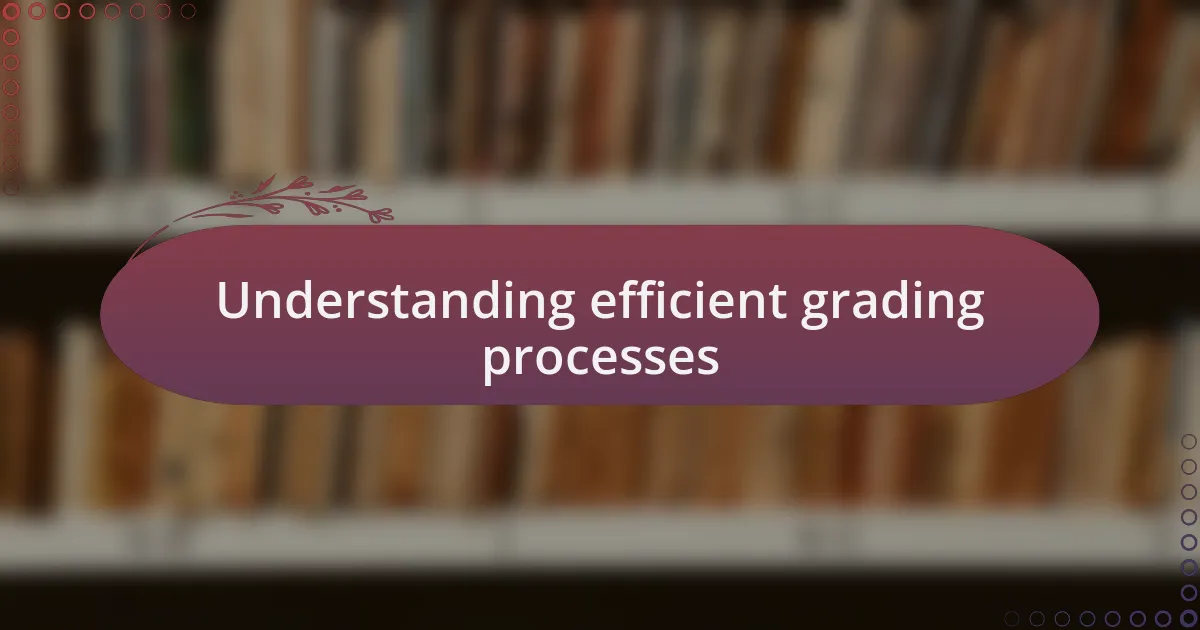
Understanding efficient grading processes
Efficient grading processes hinge on clear criteria and structured rubrics. I once found myself overwhelmed by the sheer volume of papers to grade, each one unique and deserving attention. What struck me was the realization that with a well-defined rubric in place, I could quickly evaluate each submission’s strengths and weaknesses, making the whole task feel less daunting.
I’ve learned that breaking down large tasks into smaller, manageable chunks can drastically improve this process. For instance, when I began implementing timed grading sessions, I noticed that my focus sharpened, and my feedback became more precise. Isn’t it fascinating how a simple adjustment can enhance both our efficiency and the quality of our insights?
Moreover, incorporating technology into grading—like using software that tracks student progress—has transformed how I approach assessments. When I first experimented with these tools, I was surprised by how they could automate routine tasks, allowing me to dedicate more time to meaningful interactions with my students. Have you ever considered how technology can streamline your own grading practices?
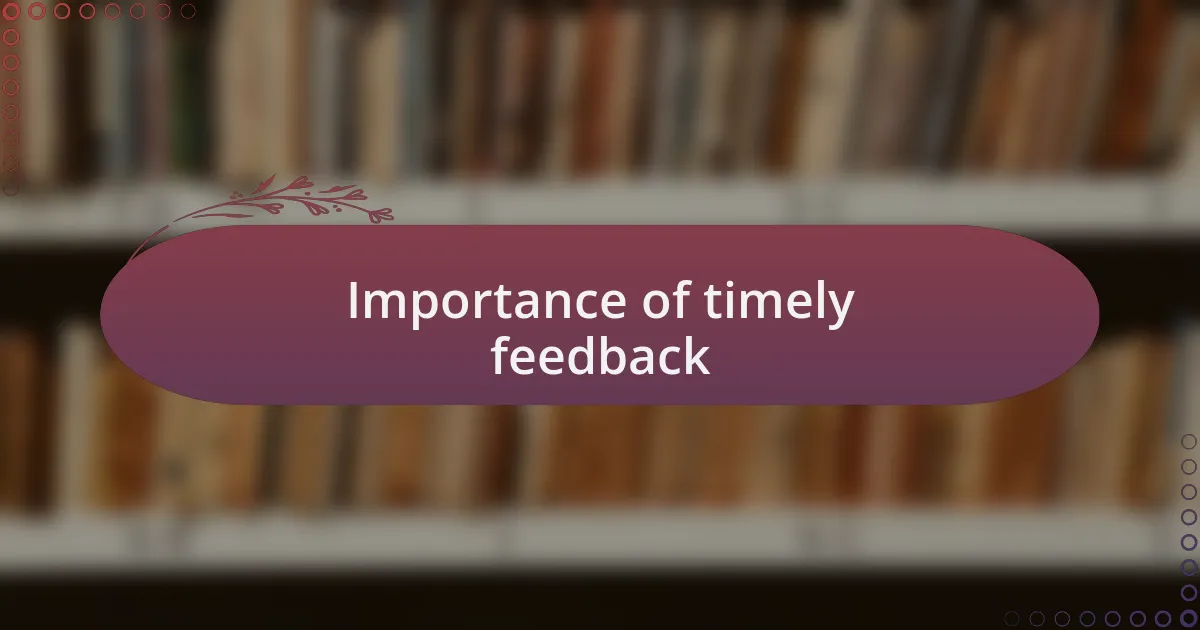
Importance of timely feedback
Timely feedback is crucial in a student’s learning journey. I remember a time when I delayed returning assignments; the students expressed their frustration, feeling as though they were wandering without direction. It hit me that without prompt feedback, learners lose motivation and miss the opportunity to address their mistakes when the material is still fresh in their minds.
When I made it a priority to provide feedback within a week, I noticed a marked improvement in student engagement. Surprisingly, many asked follow-up questions, eager to understand their errors better. It’s as if timely feedback ignited a spark of curiosity—has that ever happened in your classroom?
Furthermore, timely feedback can foster a growth mindset among students. I’ve witnessed firsthand how students who receive encouragement and constructive criticism promptly are more inclined to take risks and dive deeper into their studies. When I reflect on those interactions, I see the profound impact that immediacy can have on their confidence and willingness to tackle new challenges.
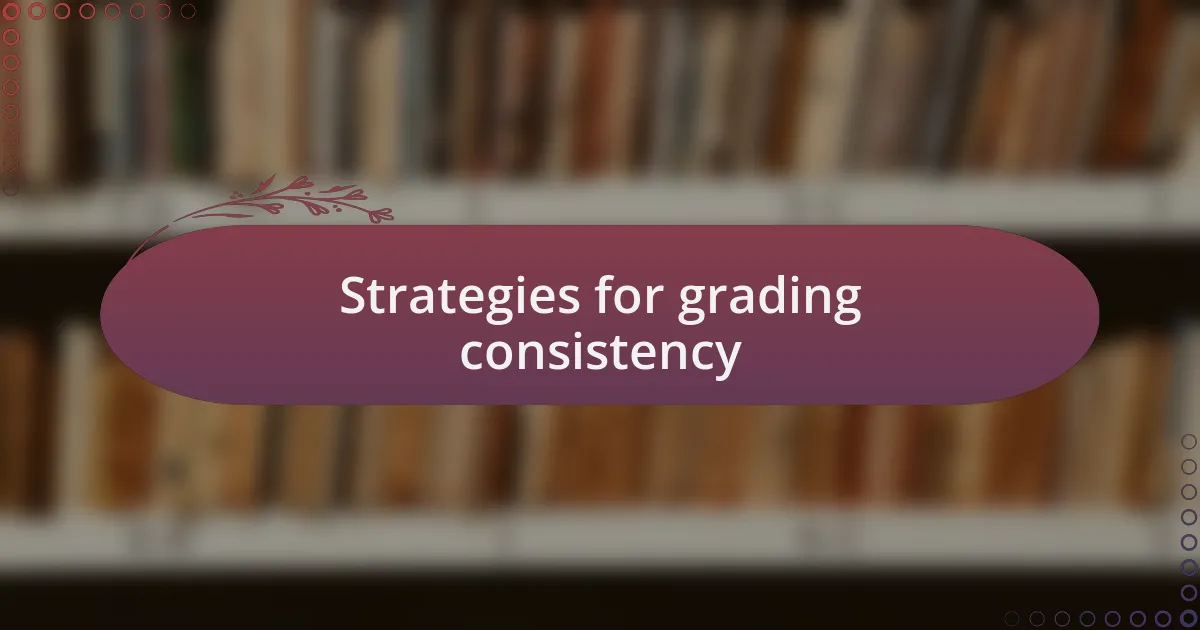
Strategies for grading consistency
Grading consistency is essential not only for fairness but also for building trust with students. I recall a semester when I experimented with different grading rubrics for the same assignment; the inconsistencies led to confusion and discontent among my students. They deserved better, and it became clear that a unified approach enhances their understanding of expectations.
One strategy I’ve embraced is creating detailed rubrics that outline specific criteria for each grade level. This practice not only streamlines the grading process but also helps students grasp what is needed for improvement. When I went through this with my classes, I could see the relief on their faces—they finally understood what success looked like. Isn’t it fulfilling to witness that “aha!” moment?
Additionally, regular collaboration with colleagues can support grading consistency. I started a monthly grading roundtable with fellow teachers where we review assignments and discuss our approaches. This collaboration has been eye-opening, revealing diverse perspectives and allowing me to refine my grading style. Have you ever considered how powerful a shared commitment to standards can be in your own teaching experience?
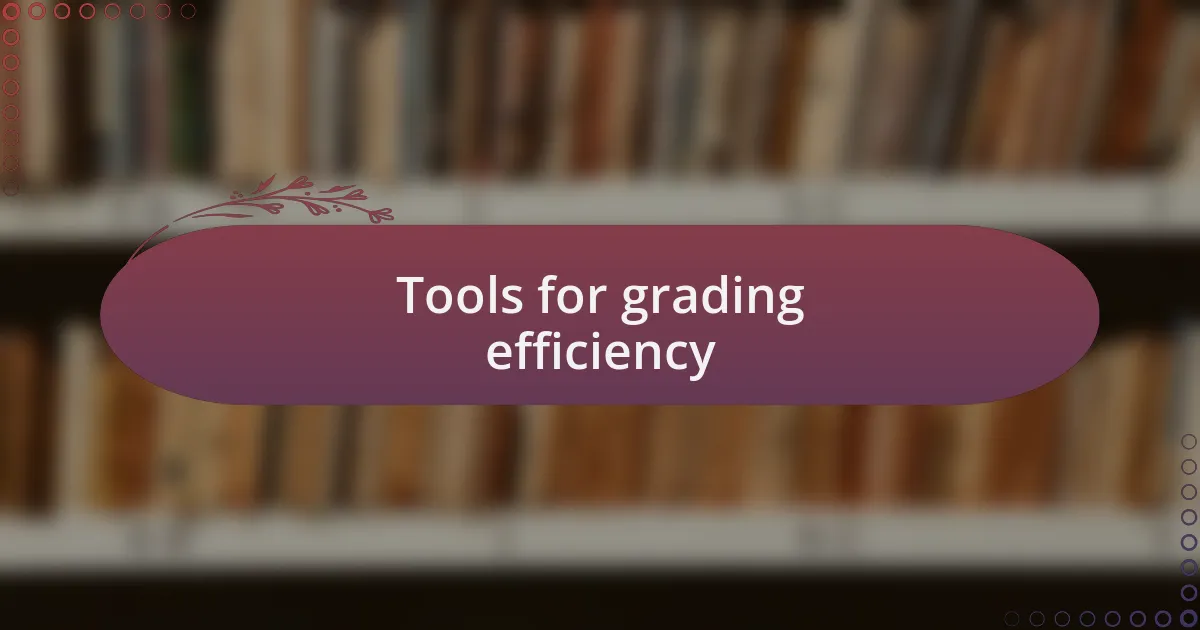
Tools for grading efficiency
Tools like Google Forms and online grading platforms have revolutionized how I approach grading. I remember the first time I used a digital rubric on Google Forms; the automation saved me hours of manual calculations. It was a game changer for my workflow—how rewarding it felt to see grades populate in real-time!
Another tool I find invaluable is learning management systems (LMS) like Moodle or Canvas. They allow easy tracking of student progress and facilitate feedback. Once, I received a message from a student who appreciated the quick feedback I could provide through the LMS. That connection reminded me of the impact timely communication has on a student’s learning journey.
Beyond software, I’ve also discovered the power of integrated apps that connect to grading systems, like Turnitin for plagiarism detection. This not only streamlines my process but also alleviates some anxiety when addressing academic integrity issues. Has integrating these tools made you rethink your grading approach? For me, the clarity and efficiency they provide is unparalleled.
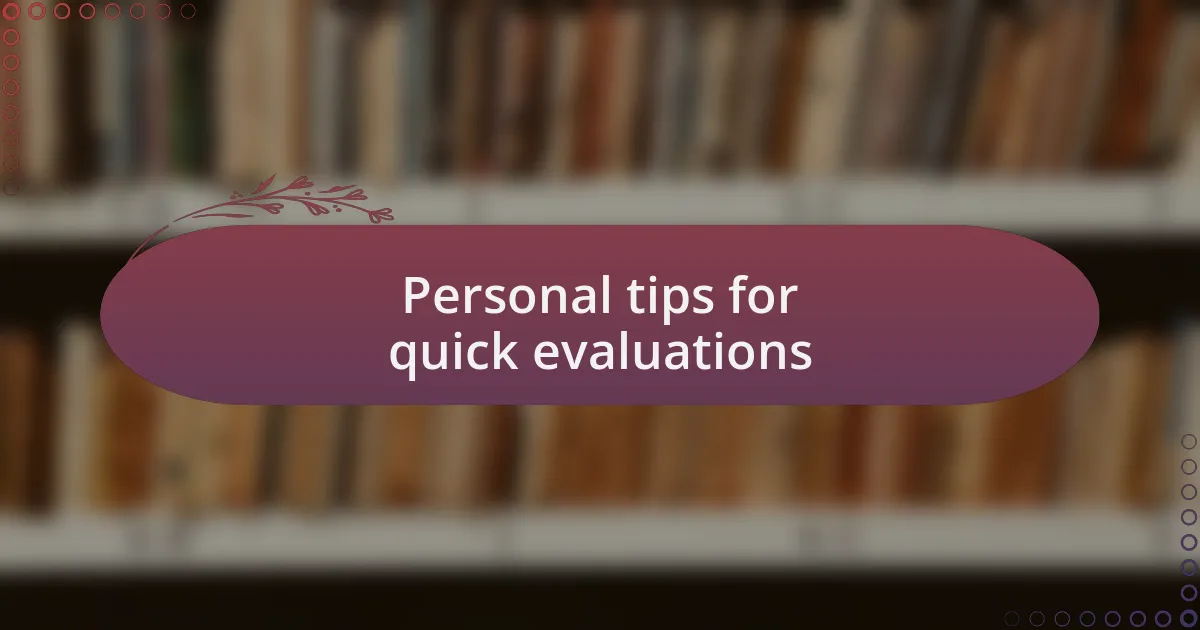
Personal tips for quick evaluations
When it comes to quick evaluations, I’ve found that setting clear criteria ahead of time is crucial. For instance, I like to create a simple checklist based on the assignment objectives. It’s astonishing how much faster I can assess a paper when I have specific points to look for—there’s a satisfying clarity that comes with a structured approach.
I’ve also started using color coding to help me visually categorize my feedback. Recently, while grading a batch of essays, I used green for strengths, yellow for areas of concern, and red for critical issues. I could see the overall engagement of the students change—some even commented on how it made their revisions easier. Have you ever thought about how a simple color palette could enhance communication in your feedback?
Finally, I try to limit my grading sessions to short, focused bursts. I remember feeling overwhelmed after hours of continuous evaluation; it drained my energy and focus. Now, I set a timer for 25 minutes, followed by a five-minute break. This method not only keeps me sharp but also turns grading into a more manageable, almost enjoyable task—who would have thought grading could feel so refreshing?
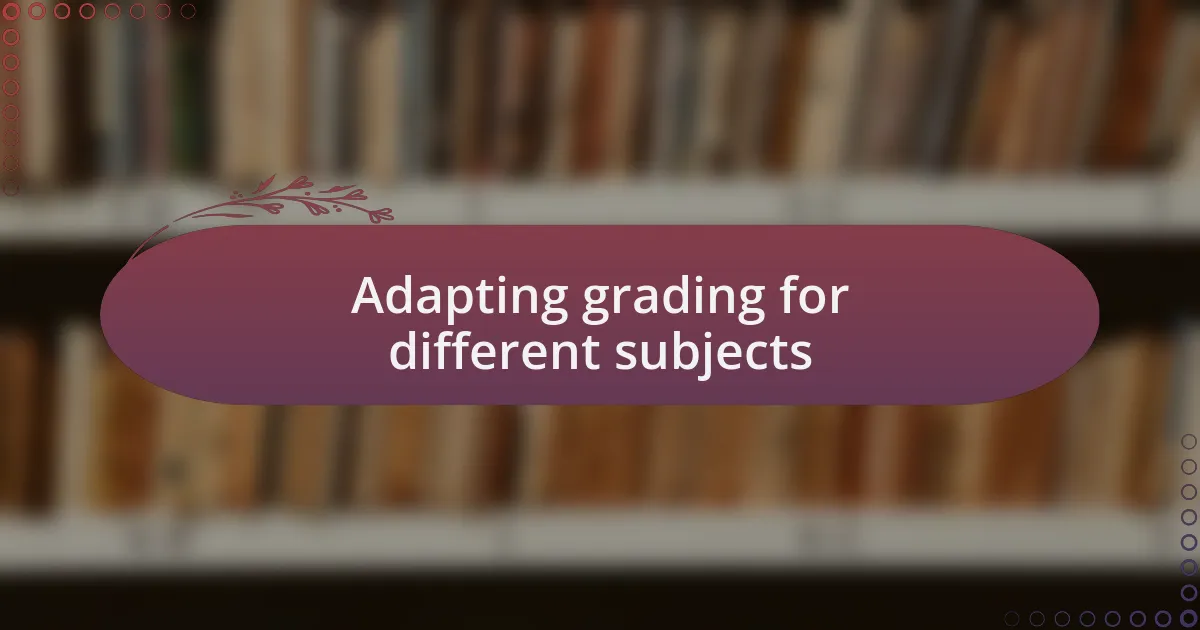
Adapting grading for different subjects
When adapting grading to different subjects, I often consider the unique nature of the content. For instance, in subjects like mathematics, where there’s often a definitive right or wrong answer, I find that using a rubric focused on problem-solving processes is invaluable. It not only streamlines grading but also highlights students’ reasoning, which enhances their understanding. Have you ever noticed how a clear breakdown of problem-solving steps can encourage deeper engagement?
In contrast, when I grade creative subjects like art or literature, I embrace a more subjective approach. I recall a time I evaluated a group of poetry submissions. Instead of just looking for technical accuracy, I focused on emotional resonance and originality. This experience taught me the importance of flexible criteria that celebrates creativity while still holding students accountable. It made me wonder: how can we ensure that personal expression is just as valued as adherence to strict guidelines?
I’ve also realized that aligning grading with project objectives is crucial across all subjects. For example, in my science classes, I often ask students to incorporate real-world applications into their projects. This adaptation not only assesses their understanding but also shows them the relevance of their learning. It’s amazing how such a small change can boost enthusiasm and investment in their work. Have you ever shifted your grading focus to reflect real-world contexts? The reward can be remarkable.
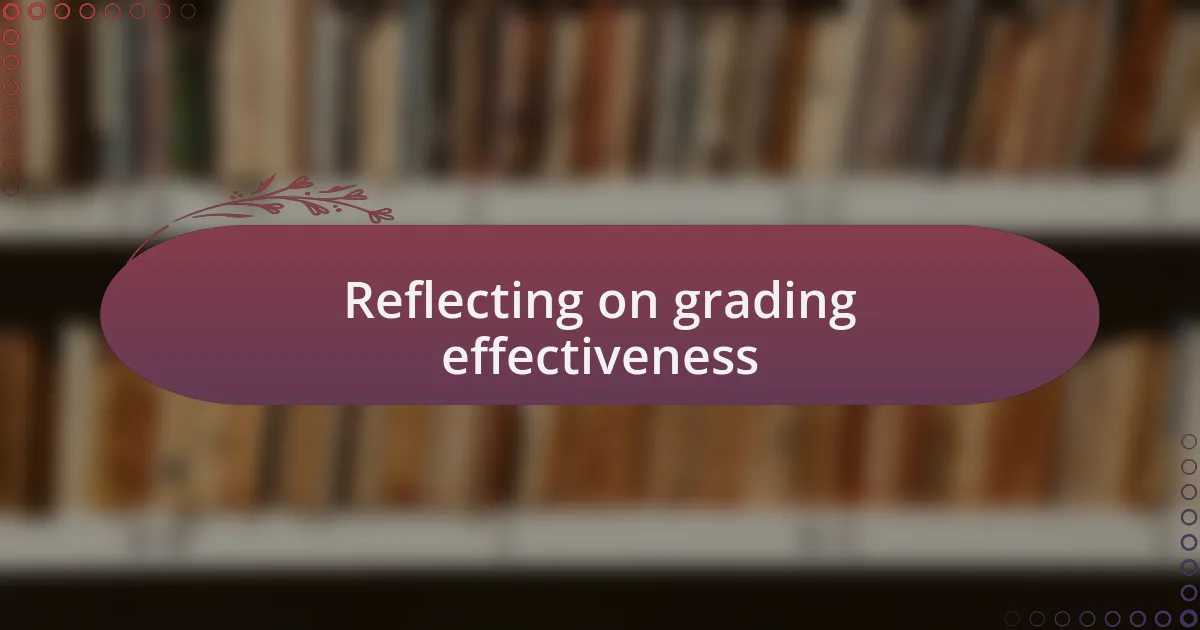
Reflecting on grading effectiveness
Reflecting on grading effectiveness requires a moment of introspection. I’ve often found myself evaluating what my grading communicates about student learning. One time, after grading a set of science reports, I realized that a focus on mere data presentation left little room for creativity or critical thinking. This taught me that effective grading should not just measure knowledge but also encourage students to express their understanding in varied ways.
Moreover, I’ve learned that seeking feedback from students about their grading experience can be eye-opening. After implementing a peer review process in my classroom, I was surprised to hear how students perceived the grading criteria. Their input revealed a disconnect between what I valued in their work and what they believed was important. It struck me that grading effectiveness hinges on open communication, fostering a dialogue that bridges the gap between my expectations and their perceptions.
Finally, I think about the emotional weight grading can carry. I remember a student who, despite struggling with math, made a remarkable effort in his project. When I graded him harshly based on test scores, I could see his disappointment. That moment was pivotal for me—it underscored the need for grading to reflect not just academic performance but also effort and growth. Could a more holistic approach to grading be the key to fostering a supportive learning environment?